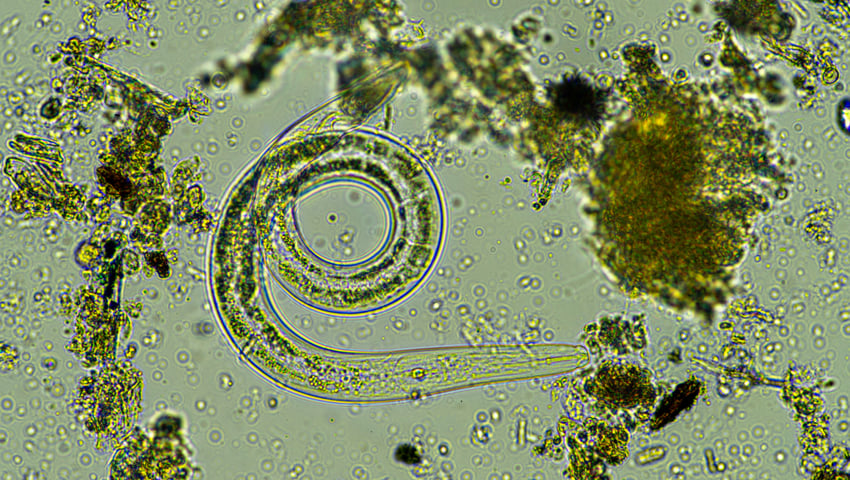New research from the Teagasc Environment Research Centre at Johnstown Castle shows that higher plant diversity of intensively managed multi-species swards enhances below-ground biodiversity and soil health. The study, which has been published in the international scientific journal, European Journal of Soil Biology, showed that as grasslands increased plant diversity up to six species of grasses, clovers and herbs, soil-dwelling nematode communities also had increased diversity and improved performance across several indices that reflect the ecological health of soil.
Fiona Brennan, Teagasc Senior Research Officer and one of the study’s lead authors, explains that soils harbour an incredible diversity of life. “In fact, soil is the most biodiverse habitat on the planet, with recent estimates indicating that it is home to 59% of biodiversity. This biodiversity underpins our food production systems and is vital for the delivery of a range of essential ecosystem services. The more we learn about this reservoir of biodiversity the more we understand its incredible importance for addressing the major societal challenges of our times.”
The central role played by soil biota in nutrient transformations, climate regulation and plant health place them at the heart of global challenges around food security, biodiversity loss and climate change. As international efforts to safeguard our soils intensify, it is critically important that the scientific evidence is available to underpin policy and practical management advice. At EU level these efforts include the recent development of an EU soils strategy, the establishment of an EU Mission on Soil Health and Food, and the publication of a proposed EU soil health law, which would provide the first legal protection to soil at EU level.
The benefits of diversity
Research carried out at Teagasc Johnstown Castle has recently assessed the impact of plant diversity on below ground diversity using soil nematodes as indicators of soil health and ecosystem functioning, explains Fiona. “Nematodes — tiny round worms that are widely distributed and highly abundant in soils — play important roles in the health of soil systems, especially for nutrient and carbon cycling. They are sensitive to changes in the environment and can give an indication of multiple aspects of the soil food web.”
Several nematode-based soil quality indices are available that relate to soil function, making them especially attractive as a soil biodiversity indicator. The research found that multi-species grasslands with six species had a positive effect on the soil nematode community and nematode soil quality indices. Compared to monocultures of forage plants, multi-species grasslands had a higher abundance of predatory nematodes, which can be beneficial for the biocontrol for plant pests. Conversely, there was a lower abundance of herbivorous nematodes in multi-species grasslands, the presence of which can negatively affect plant performance. This is of practical relevance for farmers seeking to enhance soil biodiversity and for policy aimed at farming for biodiversity benefits.
The life within soil is strongly impacted by how soil is managed. Plant-soil interactions are incredibly important for the maintenance of below ground soil biodiversity, and incorporating diversity in plant communities may represent a simple and practical way of enhancing soil biodiversity at farm level. As Fiona explains, “Diversifying plant communities can create more habitats in soil, which in turn supports more diverse soil biological communities. There has been renewed focus on the incorporation of legumes into intensive grassland-livestock systems, either as grass-clover or as grass-clover-herb multispecies mixtures.” She adds that multiple benefits associated with plant diversity in multispecies swards have been documented. “These include higher yields with lower nitrogen application, high weed suppression, lower nitrous oxide emissions intensity, enhanced soil fertility, enhanced drought resilience and improved livestock performance. This latest research reveals additional positive effects of multi-species swards on belowground soil biodiversity.”
